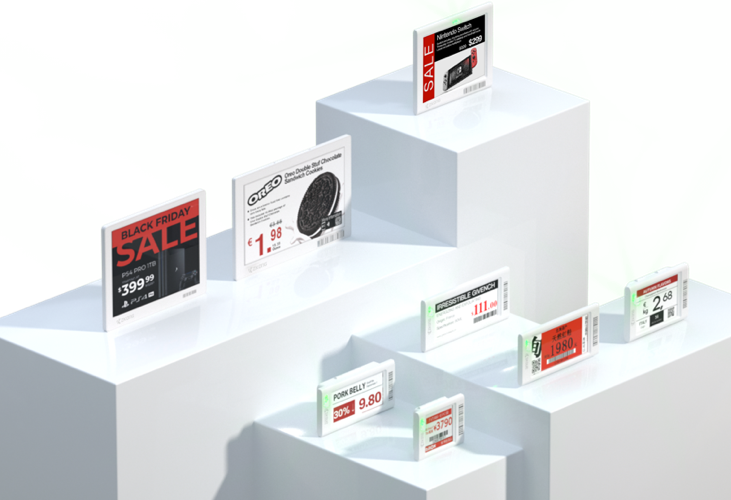Electronic shelf labels are quickly being adopted by bricks & motor retailers around Australia. The technology is also appearing in warehouses and manufacturing facilities as organisations realise the benefits in displaying up-to-date information to customers and workers.
With the cost of the wifi-enabled labels decreasing with volume and becoming more affordable (the smallest price tags come in under $10 each), many organisations are making the leap to use the technology.

So how do Electronic Shelf Labels work? Each tag, which can measure just a few centimetres wide up to almost a metre, is able to receive a wifi signal from a central modem devise installed within a 30m radius (obstacles such as shelves may impact this distance). This unit broadcasts data updates to all electronic labels in the vicinity with the latest information when prompted by the cloud-based management software. This software can integrated with other systems in the organisation via an API, so information such as price data can be pushed to the labels from one common place.
Being cloud-based, the activation of data updates can be initiated off-site in another part of the country or overseas. Hence the technology is catching the eye of larger organisations with multiple locations. The time-saving for organisations where price tags, for example, are updated daily can be enormous, and so interest in the technology from supermarkets and other large format stores is growing quickly.
A templating system is used to configure and map the display format of the labels. Different templates can be set up for groups of labels, types/sizes of labels or different geographical locations. And the information displayed on the electronic labels can include images, QR-codes, barcodes and text. Store-wide events such as a flash sale become possible where the appearance of all electronic labels can be scheduled to change their appearance for a few hours or days, and then revert back to normal.
The labels displays start at simple red, black & white, but go right up to full colour and higher resolutions too. With a wide range of sizes and shapes available the displays suit most applications needed in a modern hardware store, warehouse, fashion outlet or supermarket. Small LED lights on most units can be activated too, to draw attention from shoppers or workers.
Batteries last 5-10 years on most of the electronic labels depending on how regularly they change their display. Once a display has been updated, the labels sit in a fixed state where essentially no power is being used until the next change. The central management software shows devices nearing the end of their battery life so the batteries can be swapped out before they fail.
The Goldfish Group has partnered with one of the world’s leading manufacturers of Electronic Shelf Label technology to bring innovative solutions to Australian organisations. We are excited to be working with leading organisations to implement this ground-breaking technology.
Watch for further announcements as we continue to work with clients to roll out Electronic Shelf Labels to Australia.


